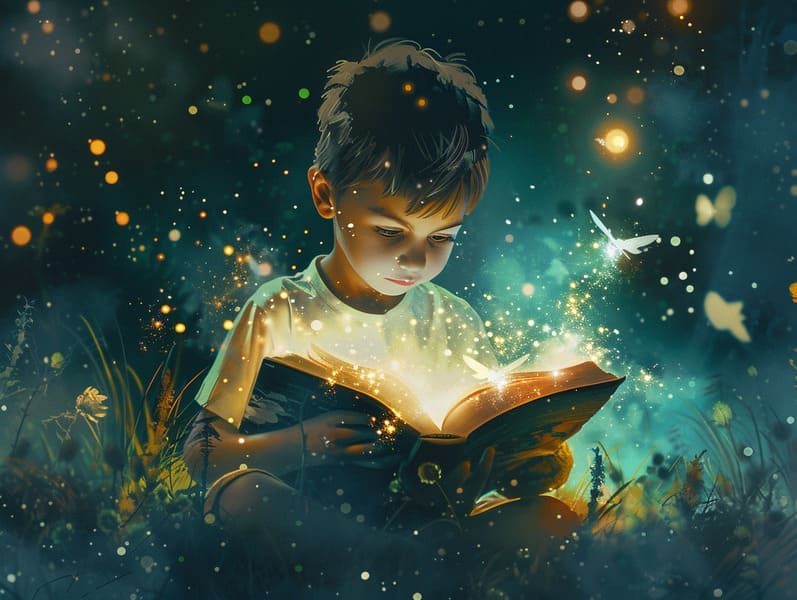The Beginning of Fairy Tales to Read and Its Unfading Splendor.
The Beginning of Fairy Tales to Read and Its Unfading Splendor.
Blog Article

Old fairy tales have old origins. These narratives have been relayed from one generation to the next long before they were ever recorded. They came from a variety of cultures, including Asian traditions. They were initially conveyed among grown-ups, often carrying themes and messages reflective of the societal norms and beliefs of the time.
Jacob and Wilhelm Grimm, Jacob and Wilhelm (the Grimm brothers), were among the first to collect and release many of these beloved fairy tales. Their collection, "Grimm's Fairy Stories," included stories like "The True Bride," "Hansel and Grethel," and "Snow-White and Rose-Red," which have since become pillars in the world of children's fairy tales. Similarly, H. C. Andersen's enchanting fairy tales, such as "The Little Mermaid," and "The Little Duckling," have touched hearts worldwide, securing their place in the pantheon of timeless fairy tales.
Despite their ancient origins, these tales remain as relevant as ever, especially as kids' bedtime tales. These fantastical tales are now available in diverse formats, including vibrantly illustrated books, enchanting animations, and digital storybooks.
Their continued relevance can be linked to several fascinating points:
Vital Lessons: Ancient fairy tales often illustrate important moral lessons. Stories like "The Wolf and the Liar" teach the importance of being truthful, while "The Story of the Tortoise and the Hare" highlight the values of perseverance and meekness. These tales offer kids clear distinctions between good and bad, molding their moral compass in a gentle yet deep way.
Sympathy and Perception: Old fairy tales frequently present figures facing challenges and problems, encouraging young readers to feel with their struggles and rally behind their triumphs. For instance, "The Tale of Beauty and the Beast" illustrates the necessity of looking beyond appearances to comprehend the real person of a person, advancing kindness and perception.
Cultural Perception: Many old fairy tales are steeped in the cultural contexts from which they originated. Exploring these stories can provide enlightening views into different backgrounds, promoting a sense of global awareness and appreciation.
Inventiveness and Fantasy: The supernatural elements in fairy tales—talking beasts—fuel children’s imaginative ideas. These narratives lead readers to fantastical realms, triggering fantasy ideas and a sense of astonishment that continues a lifetime.
Traditional fairy tales are not only captivating but also pedagogical. They work as fascinating tools in enhancing various brain and heart skills in kids. When old fairy tales are spoken, they strengthen verbal development by teaching new language and intricate sentence structures. This practice also strengthens hearing perception and mindfulness, as the young keep up with the story, keen to see what happens next.
Furthermore, analyzing the themes and characters of ancient fairy tales can strengthen critical thinking and evaluative skills. Young readers are taught to see patterns, anticipate outcomes, and comprehend cause and effect. These deliberations also assist the young express their thoughts and feelings, fostering their emotional intelligence.
In today’s modern era, the existence of digital storybooks has made these fairy tales more available than ever. Websites and digital apps share comprehensive collections of old fairy tales that can be browsed or listened via anytime, anywhere. Fairy tales spoken are particularly sought after, featuring an interactive method for little ones to delight in these whimsical stories. Voice books and narrated videos carry characters and settings to life, often supported by enchanting soundtracks and instrumentals that enhance the tale experience.
The lasting appeal of old fairy tales lies in their ability to evolve to modern society while holding onto their core values. Contemporary revisions of these stories often integrate more varied protagonists and modern settings, making them relatable to today’s audience. However, the key lessons of heroism, compassion, and truth remain unchanged, continuing to appeal to kids of all ages.
Old fairy tales also offer a sense of coziness and familiarity. They share a structured narrative with a recognizable beginning, middle, and end, often concluding with the finalization of conflicts and the triumph of righteousness over wickedness. This foreseeability can be placating for the young, spreading a sense of dependability in an shifting world.
Ancient fairy tales continue to delight and teach new generations, maintaining their enchantment and applicability in modern society. As kids' bedtime tales, they bestow a perfect blend of captivation and insight, facilitating moral values, empathy, and creativity. The abundance of web-based fairy tales and the likability of fairy tales narrated assure that these ancient fairy tales remain obtainable to new generations.
By conserving and broadcasting these tales, we continue to pay tribute to the rich tapestry of fables and cultural heritage. Whether you are discovering a gorgeously illustrated book, accessing a internet library, or listening to an audiobook, the spell of children's fairy tales is always within reach. These fairy tales illustrate of the invariable nature of storytelling and its ability to unite us across epochs and places.
No matter if you are perusing a vibrantly illustrated book, perusing a web-based collection, or playing an sound awesome site book, the loveliness of children's fairy tales is always within reach.
These tales remind us of the ageless impact of tales and its ability to tie us across time and space, forming a connection that fascinates and enlightens alike.